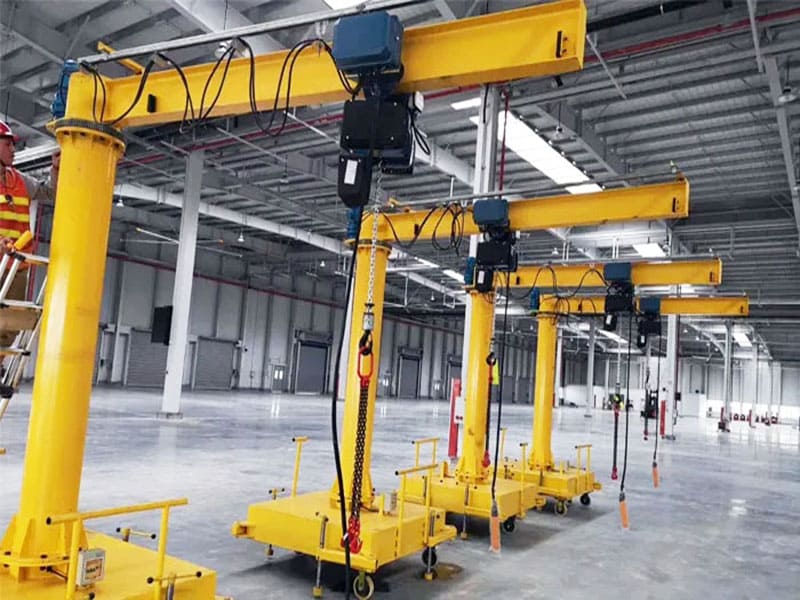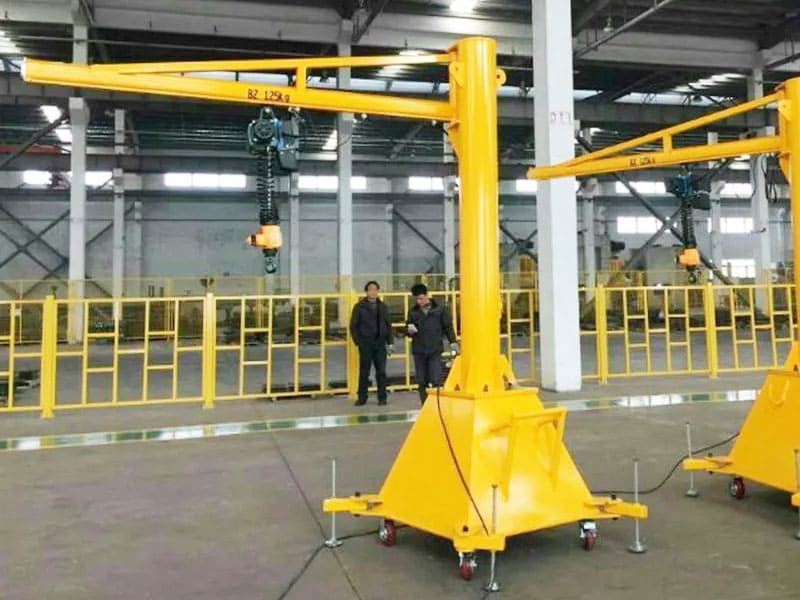Introduction
Regular maintenance of mobile jib cranes is essential to ensure their safe and efficient operation. Following a systematic maintenance routine helps in identifying potential issues early, reducing downtime, and extending the lifespan of the equipment. Here are comprehensive maintenance guidelines for mobile jib cranes.
Regular Inspection
Conduct thorough inspections regularly. Check the jib arm, pillar, base, and hoist for any signs of wear, damage, or deformities. Ensure that all bolts, nuts, and fasteners are securely tightened. Inspect the wheels or casters for wear and ensure they function properly, including the locking mechanisms.
Lubrication
Proper lubrication is crucial for the smooth operation of moving parts. Lubricate the jib arm’s pivot points, the hoist mechanism, and the trolley wheels according to the manufacturer’s specifications. Regular lubrication reduces friction, minimizes wear, and prevents mechanical failure.
Electrical Components
Inspect the electrical system regularly. Check all wiring, control panels, and connections for signs of wear, fraying, or damage. Test the functionality of control buttons, emergency stops, and limit switches. Replace any faulty electrical components immediately to maintain safe operation.


Hoist and Trolley Maintenance
The hoist and trolley are critical components that require regular attention. Inspect the wire rope or chain for fraying, kinks, or other signs of wear and replace them as necessary. Ensure that the hoist brake is functioning correctly to maintain control over loads. Check that the trolley moves smoothly along the jib arm and make any necessary adjustments.
Cleanliness
Keep the crane clean to prevent dirt and debris from interfering with its operation. Regularly clean the jib arm, base, and moving parts. Ensure that the hoist and trolley tracks are free of obstructions and debris.
Safety Features
Regularly test all safety features, including overload protection, emergency stop buttons, and limit switches. Ensure they are fully operational and make repairs or adjustments as needed to maintain high safety standards.
Documentation
Maintain a detailed maintenance log, recording all inspections, repairs, and part replacements. This documentation helps track the crane’s condition over time and ensures that all maintenance tasks are performed as scheduled. It also provides valuable information for troubleshooting any recurring issues.
Conclusion
By adhering to these comprehensive maintenance guidelines, operators can ensure the safe, efficient, and long-lasting operation of mobile jib cranes. Regular maintenance not only enhances productivity but also significantly reduces the risk of accidents and equipment failure.
Post time: Jul-19-2024









